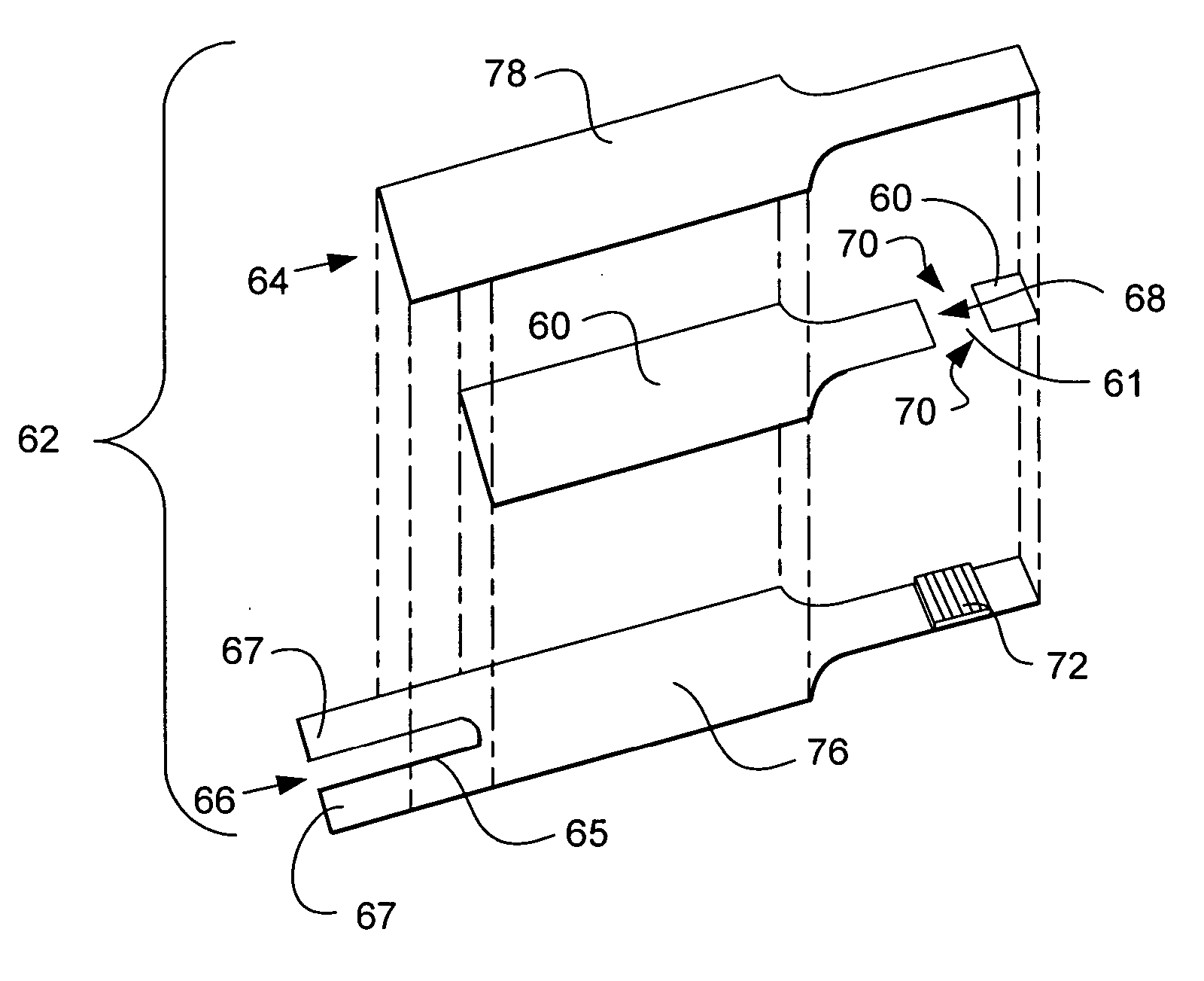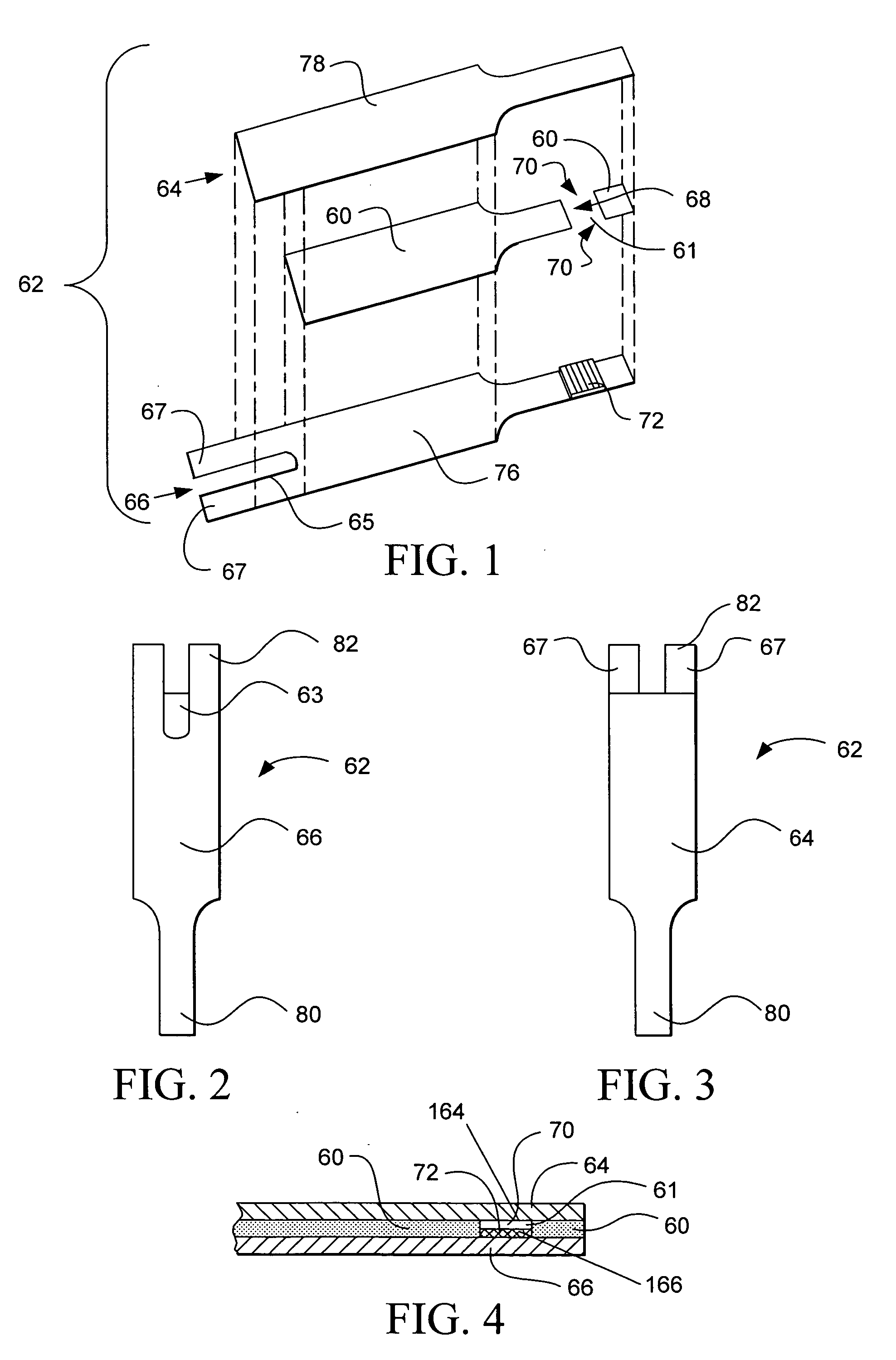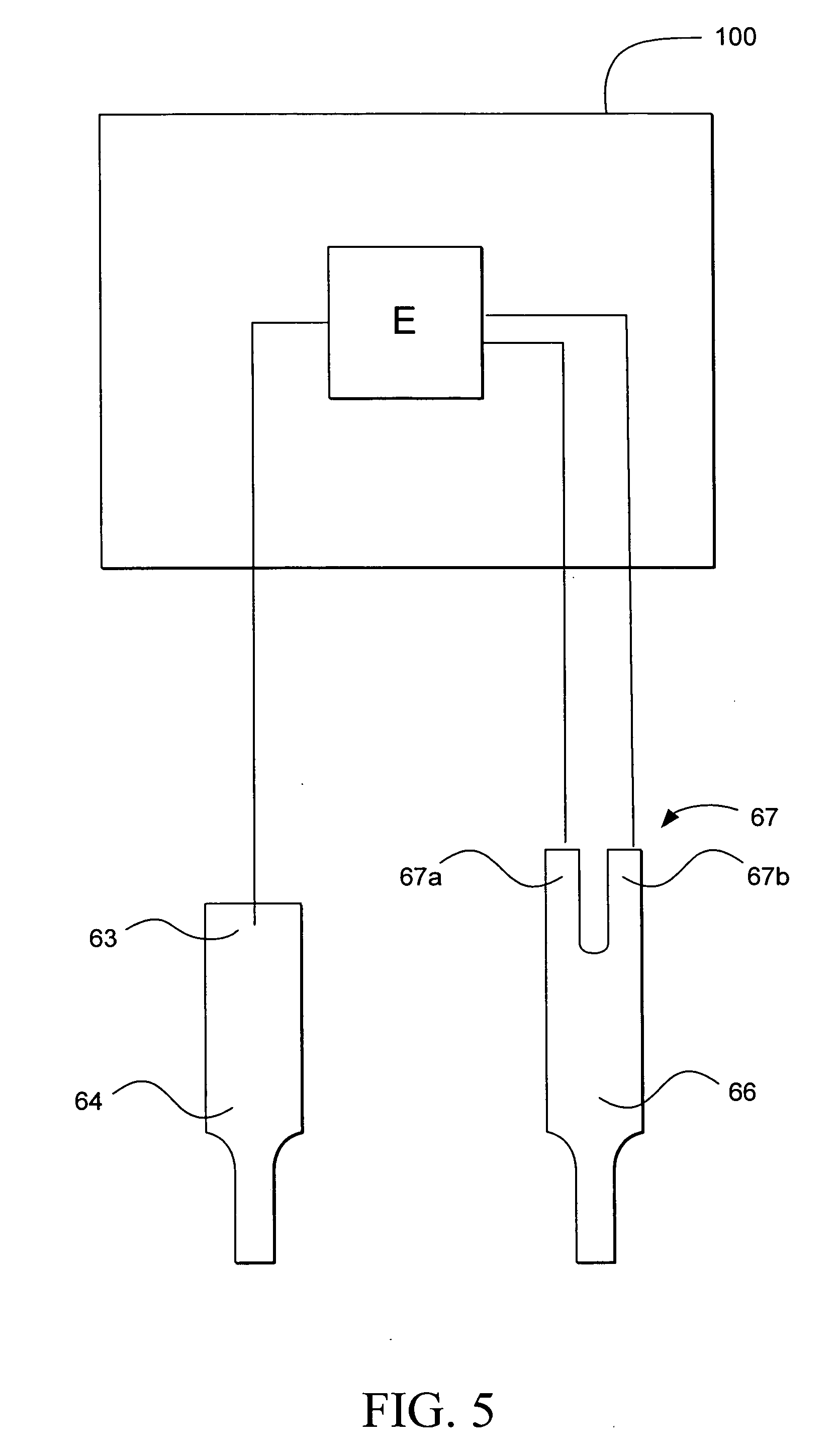Method and apparatus for rapid electrochemical analysis
- Summary
- Abstract
- Description
- Claims
- Application Information
AI Technical Summary
Benefits of technology
Problems solved by technology
Method used
Image
Examples
example 1
[0075] A buffer was prepared that contained 100 mM citraconate at pH 6.5, 0.1% anti-foam (RNA Equilibrator), and 4 mM CaCl2. Next, GDH which used a PQQ cofactor, was added to the buffer so that it was 46 mg / mL. PQQ was then added to the buffer so that it could activate the GDH. PQQ was added to the buffer such that there were at least 2 moles of PQQ per mole of GDH. After addition of PQQ, the formulation was allowed to incubate about one hour. Next, potassium ferricyanide was added to the mixture such that it was 800 mM. The formulation was striped onto first electrode 166 as shown in FIG. 1 by means of a slot coating process which is described in U.S. Pat. Nos. 6,749,887; 6,689,411; and 6,676,995 which are hereby incorporated by reference herein. Upon coating the formulation and drying it such that it forms reagent layer 72, spacer 60 and second electrode 164 are assembled thereon to form test strip 62.
example 2
[0076] Several test strips 62 were tested with blood for a wide range of glucose concentrations from about 20 mg / dL to about 600 mg / dL in blood. Twenty-three different blood donors were used for this study. Test strips 62 were tested using a five second test time. The measured current was converted to a glucose concentration using Eq. 5. A bias was calculated for each test strip against the reference method. At low glucose concentration (<100 mg / dL), an absolute bias was calculated and at high glucose (≧100 mg / dL), a percent bias was calculated. FIG. 8 shows that 93% of the data points have a bias less than or equal to 10% or 10 mg / dL.
[0077] A first potential was applied between the electrodes with the reagent coated electrode being −300 mV with respect to the other electrode for 4.0 seconds, the potential was then reversed such that the reagent coated electrode was at +300 mV with respect to the other electrode for 1 second. The current values at 50 ms intervals were measured and ...
PUM
 Login to View More
Login to View More Abstract
Description
Claims
Application Information
 Login to View More
Login to View More - R&D
- Intellectual Property
- Life Sciences
- Materials
- Tech Scout
- Unparalleled Data Quality
- Higher Quality Content
- 60% Fewer Hallucinations
Browse by: Latest US Patents, China's latest patents, Technical Efficacy Thesaurus, Application Domain, Technology Topic, Popular Technical Reports.
© 2025 PatSnap. All rights reserved.Legal|Privacy policy|Modern Slavery Act Transparency Statement|Sitemap|About US| Contact US: help@patsnap.com



